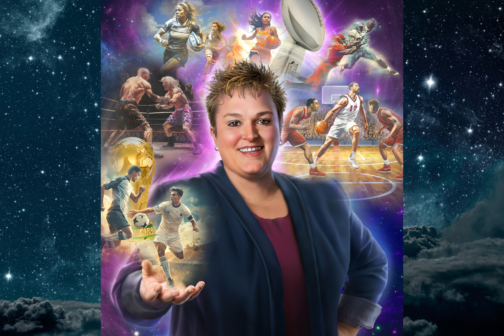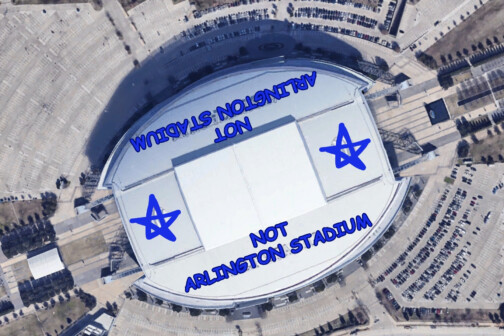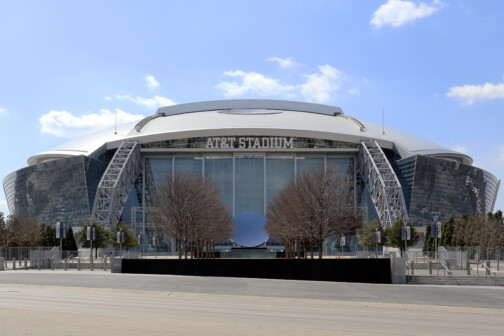At the center of the North Texas soccer universe is an unassuming 42-year-old Spaniard who would look right at home handing out orange slices at a Saturday morning youth match. On the touchline, he often rocks a subdued look, going with a T-shirt and pants that accent a favorite pair of athletic shoes and a watch with a white band. Function over fashion is the name of the game for first-year FC Dallas coach Nico Estévez.
“I want to be comfortable, and I want to be myself,” he says. “I want to be someone who wears something I can wear every day, and then people can know me better as who I am.”
FC Dallas fans are getting to know Estévez quite well. And they have to like what they are seeing. In his first season with the club, Estévez is taking his squad to the MLS playoffs, a year after it finished with the third-worst record in the Western Conference.
So exactly how did Estévez get here?
On Sept. 20, 2021, FC Dallas was in the market for a coach after Luchi Gonzalez left the club. Gonzalez had been with the organization since 2012, first as an academy coach, then as director of the academy. He had replaced Oscar Pareja, now the coach of Orlando City. Pareja had also spent many years in Frisco before his promotion, dating to 2006. But after almost a decade of internal hires, the club decided to look outside for a coach. FC Dallas president Dan Hunt wasn’t lacking for options.
“We had so many people who applied for the job and so many people reaching out to recommend names,” Hunt says. “Inbound traffic was really amazing.”
In the end, André Zanotta, the club’s technical director, connected with one of the most important voices in domestic soccer.
“[Zanotta] has a good relationship with Gregg Berhalter, which dates back a number of years,” Hunt says. “He said, ‘Look, Nico Estévez is ready for a head coaching job in Major League soccer.’”
Estévez was a well-traveled coach. He spent two years under Berhalter as an assistant with the U.S. Men’s National Team and with MLS’s Columbus Crew, where he also was the director of methodology before joining the bench. Before that he coached at all levels in his native Spain. Despite all that experience, Estévez wasn’t expecting the opportunity.
“My reaction was surprise,” Estévez recalls. “I was focused on my job at the national team. I asked Gregg, ‘What do you think?’ He told me, ‘It could be a good opportunity for you because of the club. You could get into this process that the MLS club coaches get, to know how it is.’”
Estévez was one of four finalists for the job. It was the first time an MLS club had expressed interest in making him its head coach. A few qualities set him apart from his competition.
“His attention to detail, his communication skills, his ability to transmit his message, his understanding of the game,” Hunt says. “He brings a unique perspective too, with his international background. But he also has MLS coaching experience, national-team coaching experience. The other side of it was the familiarity with our team. His ability to break down and analyze our team was really impressive. The things we did well and the things we didn’t do very well that led to not the 2021 we hoped for.”
Estévez also believed his knowledge about the franchise made him a natural fit.
“If there’s one club to start coaching in MLS, for me and the familiarity I have with this club through the years and through the players in the national team, FC Dallas is the best one,” Estévez says.
The hire was announced last Dec. 2, making Estévez the ninth full-time manager in FC Dallas history. Upon his arrival, he started to mold the club in his own image.
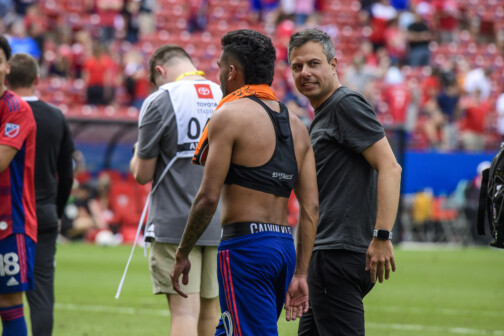
“I think the club already had a good base,” he says. “I think with my knowledge coming from Spain, my experience with Columbus and the national team, having worked with Gregg for a long time I could add things that in the past the other people didn’t add that could help the club grow in a different way.”
Estévez implemented a 4-3-3, bringing stability to a club that under Gonzalez had fluctuated between shapes with varying degrees of success. The addition of Paul Arriola, a veteran winger with national team experience, along with the younger players such as goalkeeper Maarten Paes, winger Alan Velasco, and left back Marco Farfan bolstered the club on the pitch. Estèvez, however, wasn’t content with just changing things between the lines.
“Other things that maybe aren’t that visible inside the club like the nutrition, the meals, the diets,” he says. “We have breakfast and lunch every day for the players, following a diet and nutrition guidelines. We expanded the gym, we renovated the offices for the coaching staff, and made some little adjustments there that I think the players appreciated. We do a lot of dynamics as a group—team-building activities every time we can. For me, it was important when I came and talked with the owners that they have the feeling that they will support the changes that I wanted to make to give my touch as a coach and put all the knowledge I have, the experience that I have in benefit of the club and the players.”
While some owners might have been resistant to change upon being told that what they were doing wasn’t enough, Hunt was willing to listen. “It’s great to hear because if you’re not learning and improving you’re basically dying,” he says. “You have to constantly strive to improve to be better. Again, it’s those outside voices that sometimes help you with those things. [Estèvez] clearly did with us; he challenged us on some things.”
The influence runs deeper than that. From making sure that every player is featured in pre-match video packages to constructing tweets about his players’ accomplishments, there’s nothing in which Estévez isn’t involved.
“Since the first time I came here, I want to know everyone in the club,” he says. “I like to know everyone in every department. Anything that I can help with, we’re here together. I know there’s a lot of things we, and me as a coach, can help the whole department. Media, marketing, sales, everything. If we are together in this, we will have a good time.”
After every win this season, the club celebrates Victory Monday Cookie. Estévez and team administrator Tanner Holley deliver goodies to the front office staff. It’s an idea he got from Berhalter, who in Columbus after a home win brought breakfast for the Crew front office. He sees it as one way to develop franchise unity.
“It’s trying to change the culture here, trying to integrate everyone,” Estévez says. “When media or marketing travel with us, we integrate them with the team. They are in our meals, they have the same rules, the same fines, and everything. [He laughs.] They feel very comfortable, they enjoy the time, they know the players better, and it makes their job easier. They recognize that they’re part of the club, they have a role in the club, and everyone is important.”
During a game, you won’t often find Estévez barking up and down the sideline. Like any other manager he’s not afraid to let his opinion be heard, but he’s not like fellow MLS bench bosses Peter Vermes and Adrian Heath, who ride officials with constant complaints and berate their players when they make mistakes.
“I like to give confidence to the players and let them play,” Estévez says. “Of course they’re going to make some mistakes, and if I get mad I’m not helping them. I want to give them confidence, and just let them be the protagonist of the game. Usually when I intervene in the game, it’s more to give tactical advice to the players, and some inputs that I believe are important.”
Defender and captain Matt Hedges, who has been with the club since 2012, is playing for his fourth manager with FC Dallas. He sees a very top-down approach from the skipper in training and matches.
“We have great assistant coaches out here,” Hedges says. “They all have their role. He lets them specialize in their role and coach that role up. If he sees anything big picture, he lets us know.”
When it comes to giving his input, Estévez is not afraid to go straight to the top. During the SuperDraft in January, Estévez had his eyes on Tsiki Ntsabeleng out of Oregon State by way of South Africa. Ntsabeleng was a technically gifted player and by someone Estévez highly respected (Beavers head coach Terry Boss). But he also was on the small side and, in Estèvez’s mind, playing slightly out of position as a winger. Estévez saw a hidden gem whose talents could be fully unlocked with a move into the midfield. The club had already drafted a pair of exciting prospects for its new coach in winger Isaiah Parker and defender Lucas Bartlett, both of whom were top-six selections. But as the first round wound down with Ntsabeleng still on the board, Estévez couldn’t help but wonder if there was room for one more.
It was time for the hard sell. In addition to moving back into the first round by sending $50,000 in general allocation money to New York City FC for the 28th pick (money it would later get back by sending its 34th pick to NYCFC), Dallas had to acquire another international slot before signing Ntsabeleng, which it did by trading $250,000 in GAM to Seattle on Jan. 28. The midfielder was signed about two weeks later.
“You have to take risks sometimes,” Estévez says. “I remember when I was pushing with Andre and with Dan. [I was asked], ‘Are you sure we need to pay to get a better [draft pick]?’” In the end, the front office put its faith in Estévez and decided spending the extra money was worth the gamble.
In this case, the subject of the risk was someone Estévez had never met. He based everything on tape study and talking with Boss. Ntsabeleng remembers the first call with his new coach well.
“He sounded very excited,” he says. “We didn’t talk much on that day, because I think he understood I was overwhelmed and excited. So he waited until I came in, and that’s when we started discussing stuff.”
Hedges has seen an evolution in the first-year manager.
“‘Reserved’ is a good word,” he says. “Pretty quiet, but once you get to know him and get to talk with him he really opens up. Probably about a week or two into preseason, once he got comfortable with everything going on, it was a night-and-day difference.”
Despite the team’s success and its playoff arrival in his first campaign, Estévez does his best not to look down the road.
“We’re focusing on the next game,” he says. “For me it’s, OK, next game and get the most points we can, and when we finish the season we’ll see where we’re at.”
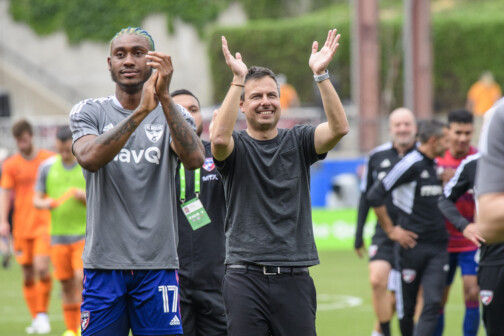
But make no mistake: FC Dallas isn’t standing pat. In addition to all the turnover last winter, the team added midfielder Sebastian Lletget in August. There’s more, and Estévez has been right in the middle of it all.
“We paid the highest price we’ve ever paid for a player in Alan Velasco, we paid the highest transfer fee within Major League Soccer for Paul [Arriola],” Hunt says. “We also traded away a fan favorite and a person we had a great relationship with in Ryan Hollingshead for Marco Farfan. [Estèvez] challenged those things to push us, and he’s continued to look to the future on how to push us to the ultimate goal of MLS Cup.”
As the front office pursues the trophy it got so close to in 2010, the goals of the man it hopes will lead FC Dallas to a championship are a bit different. When asked about what he wants his legacy to be, he starts in a place that might be unexpected.
“For the club to be that culture that we all feel like a family that already existed here in FC Dallas,” Estévez says “Where everyone feels like anyone can approach me and talk with no problem or we can do something together, plan something with marketing and the players, with the media. Something that the communication, the way we talk to each other is very good, and we come here to work hard but also enjoy and have really good moments and have fun.”
That’s not to say he doesn’t understand why he was hired.
“Basically, what I want to do is make the club grow in the direction that the top teams in the world are going and put them in that position, and leave a team that can consistently make the playoffs to achieve the MLS Cup,” Estévez says.
One of the concepts Estévez emphasizes with his players is no matter what we do, we do it together. Even if you’re doing it wrong, at least do it together. As his first year comes to a close, the sense of togetherness is a resounding theme. All well and good, but if this club wins a championship, it will largely be because of the vision and leadership of the unassuming Spaniard.
Get the ItList Newsletter
Author




